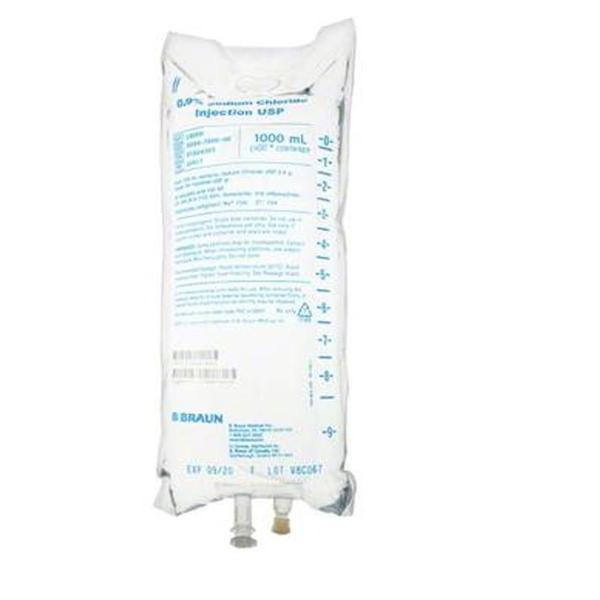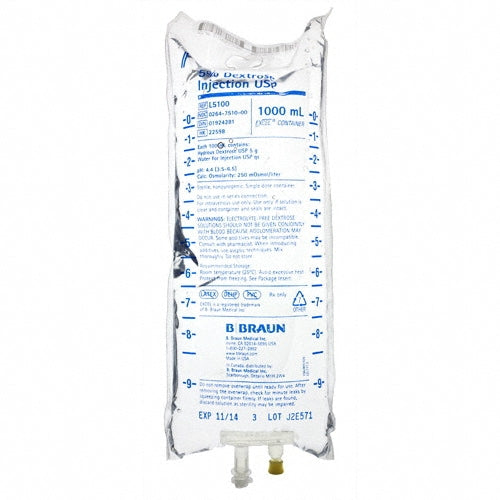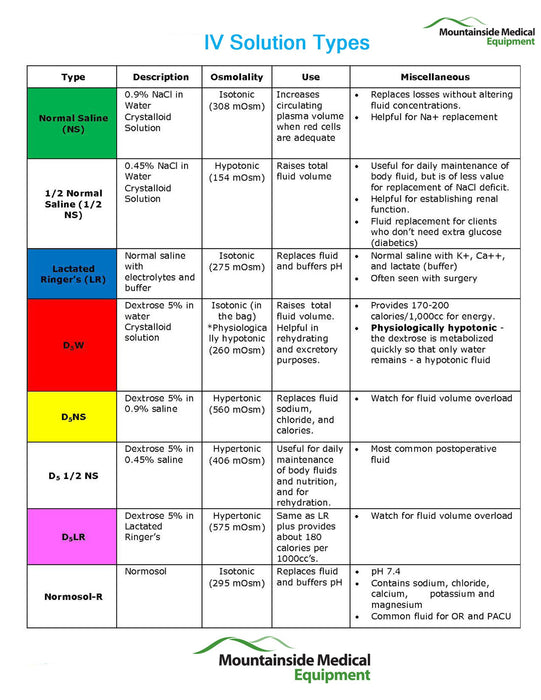IV Bag Solutions for Intravenous and Infusion IV Therapy (Rx)
(Note: We don’t Fill Personal Prescriptions)
How to Order:
IV Bags-Sodium Chloride, Dextrose, Lactated Ringers, and Sterile water. IV bags for intravenous therapy. I.V. fluids provide the patient with life-sustaining fluids, electrolytes, and medications and offers the advantage of immediate therapeutic effects. Solutions used for I.V. fluid replacement fall into a broad categories of crystalloids and colloids. A solution administered into a vein through an infusion set that includes a plastic or glass vacuum bottle or bag containing the solution and tubing connecting the bottle to a catheter or a needle in the patient's vein.
Intravenous fluid replacement is a vital part of treating multi-system illness. To maintain the patient's health, the fluid and electrolyte balance in the intracellular and extracellular spaces needs to remain relatively constant. Whenever a person experiences an illness or a condition that prevents normal fluid intake or causes excessive fluid loss, I.V. fluid replacement may be needed.
Application areas: Cephalic vein, Accessory cephalic vein, Radial Vein, Basilic vein, Median cubital vein, Medial antebrachial vein, Dorsal venous network, Dorsal metacarpal veins, Great saphenous vein, Dorsal plexus, Dorsal arch
This IV Solution Types Chart below details hydration and electrolyte therapies for restoring patient fluid balance and nutrient delivery.
| IV Bags (IV Solutions) |
Uses |
| Dextrose 5% in water |
|
| 0.9% Sodium Chloride (normal saline) |
|
| Lactated Ringer's solution (LR) |
|
| 0.45% Sodium Chloride (half-strength normal saline) |
|
| Dextrose 5% with 0.45% Sodium Chloride (normal saline) |
|
| Dextrose 5% with Sodium Chloride (normal saline) |
|
| 3% Sodium chloride |
|
| Dextrose 10% in water |
|
| Note: Documentation for a patient receiving an I.V. infusion should include the date, time, and type of catheter inserted; the site of insertion and its appearance; the type and amount of fluid infused; the patient's tolerance and response to therapy. | |
Understanding electrolytes:
Electrolytes help regulate water distribution, govern- acid based balance, and transmit nerve impulses. They also contribute to energy generation and blood clotting.
Easy Flowing
Crystalloids are solutions with small molecules that flow easily from the bloodstream into cells and tissue. There are three types of crystalloids:
Isotonic crystalloids contain about the same concentration of osmotically active particles as extracellular fluids, so fluid doesn't shift between the extracellular and intracellular areas. Lactated Ringer's solution and 0.9% normal saline are the two most common used.
Hypotonic crystalloids are less concentrated than extracellular fluid, so they move from the bloodstream into the cell, causing the cell to swell.
Hypertonic crystalloids are more highly concentrated than extracellular fluid, so fluid is pulled into the bloodstream from the cell. causing the cell to shrink. Hypertonic solutions called colloids may be used to increase blood volume. Colloids draw water from the interstitial space into the vasculature. Examples of colloid solutions are plasma, albumin, hetastarch, and dextran. The effects of colloids last several days if the lining of the capillaries is normal. The patient needs to be closely monitored during a colloid infusion for increased blood pressure, dyspnea, and bounding pulse, which as signs of hypervolemia.
IV Bag Solutions provide an essential resource in medical care, offering a precise and efficient method for intravenous fluid administration and medication delivery. These solutions come with key benefits such as ensuring accurate fluid balance and supporting rapid rehydration, which are crucial for patient recovery in various clinical settings. The sterility and reliability of IV bags reduce the risk of contamination and infection, making them a safe choice for both routine and emergency medical procedures. Their easy-to-use design allows healthcare professionals to quickly administer treatments, thereby improving patient outcomes and streamlining workflow. Additionally, the diverse range of formulations available meets various patient needs, from electrolyte balance management to nutritional support, ensuring comprehensive care. By choosing IV Bag Solutions, healthcare facilities can enhance their service delivery, optimizing patient care and operational efficiency. To elevate your healthcare practice and ensure the best patient care possible, consider integrating IV Bag Solutions as a cornerstone of your intravenous therapy protocols.







